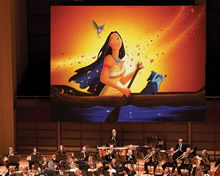Although we’re smack dab in the middle of the Bible Belt, organists and the recitals they play don’t get nearly enough respect hereabouts. It’s not that there aren’t enough good organs or that players are part of an endangered species. At Duke, there’ve been regular organ recitals for years. True, we don’t often hear details about them very far in advance and there’s also the challenge of the Gothic Rockpile’s pay-to-hear-our-free-concerts parking, but their series is ongoing, and the fact that there are several outstanding instruments to choose from there adds to the appeal for organ music enthusiasts. Over in Raleigh, there’s a splendid new instrument at Edenton Street United Methodist Church, a Létourneau organ of immense proportions that can put out prodigious, room-shaking sound – balanced, dynamically, by some of the softest, gentlest effects imaginable. (For more information, click here.) This season, for the second year in a row, the church is offering a whole series of programs by various artists, visiting and otherwise. On a dreary Friday evening shrouded in mist and drizzle, William J. Weisser, who’s been plying his trade as Minister of Music at Edenton Street UMC for 34 years, took to the console’s bench for a richly varied program of music for or inspired by Lent and Passion Week.
Gordon Jacob’s “Festival Flourish” (1958) got things off to an intriguing start. That the British composer’s music is not often heard here is a pity; this piece is more pungently contemporary than one might have thought, and it served as an admirable curtain-raiser. Two chorale preludes by Bach fit nicely into the evening’s context; the version of “Wenn wir in höchsten Noten sein” Weisser played is apparently a late one, and it seemed somewhat amorphous, but “O Mensch, bewein dein’ Sunde groß,” which the composer set numerous times, is more of a piece. Both were thoughtfully and skillfully realized and warmly received.
A chaconne by Pachelbel (who wrote The Canon) made a very favorable impression, as did a contrasting chorale by Henrik Andressen, a Dutch composer too rarely heard here. One of the highlights of the program – there were several – were two movements from organ symphonies by Widor, whose Toccata is one of the repertoire’s best-known war horses. On this occasion it was a special treat to hear the slow movement that precedes that famous chestnut; the mastery of the construction of the Adagio and its profound musical content made one wish the entire work had been given. Likewise, the Gothic Symphony’s Andante sostenuto, a beautiful and compelling movement, served as a strong argument for public readings of the other big Widor pieces for solo organ – particularly on this outstanding instrument and in the appealing acoustics of this church.
Two works by Marcel Dupré helped refocus the evening on Lent and Holy Week; the first, a searing “Lamento,” plumbed spiritual depths, while the second, “Crucifixion,” from the Symphonie-Passion, Op. 23, depicted that event in often stark musical language. (There will be more Dupré at this church on April 2, when for Good Friday the Stations of the Cross will be presented by organist Josh Dumbleton.)
For the finale, Weisser selected the very grand and grandly reaffirming “Pièce héroïque” of Cesar Franck, another of the repertoire’s great sit-up-and-take-notice works. The performance was splendid in every respect, and at the end there was a big uproar from the relatively small crowd of devotees and parishioners.
Two concerts remain in this year’s series – that aforementioned April 2 program and an evening of Charlie Chaplin silent films with organ accompaniment by Dorothy Papadakos, on July 30. We’ll have details in our calendar in due course. And please note that these concerts are free – and there’s ample free parking in the vicinity.











